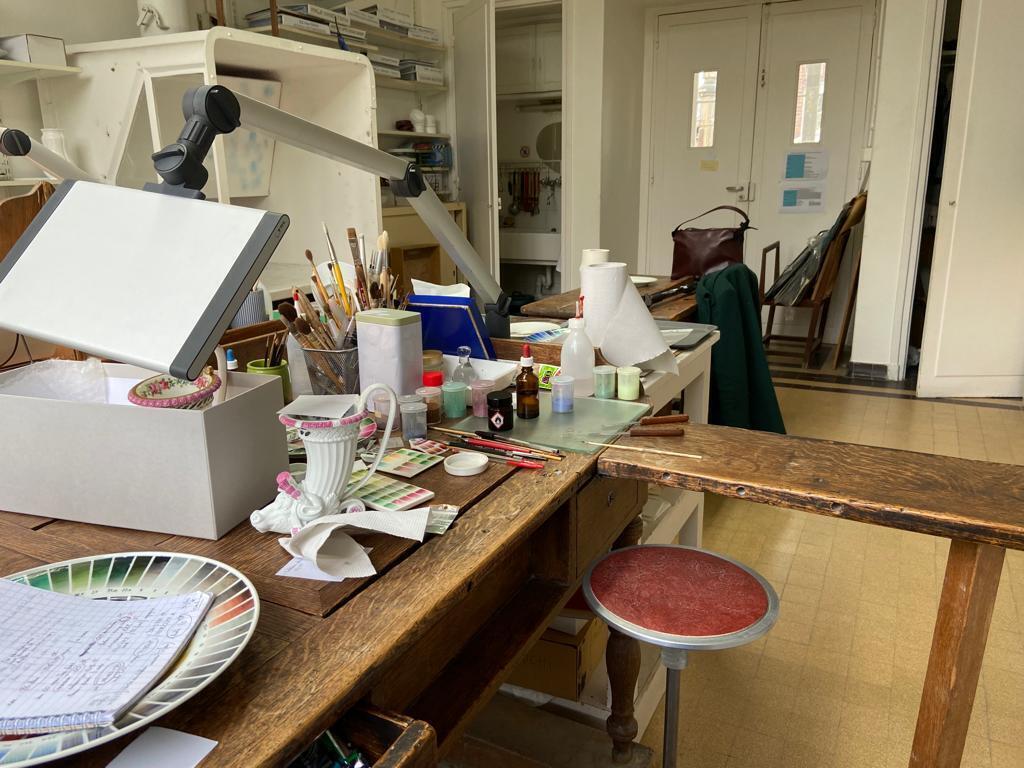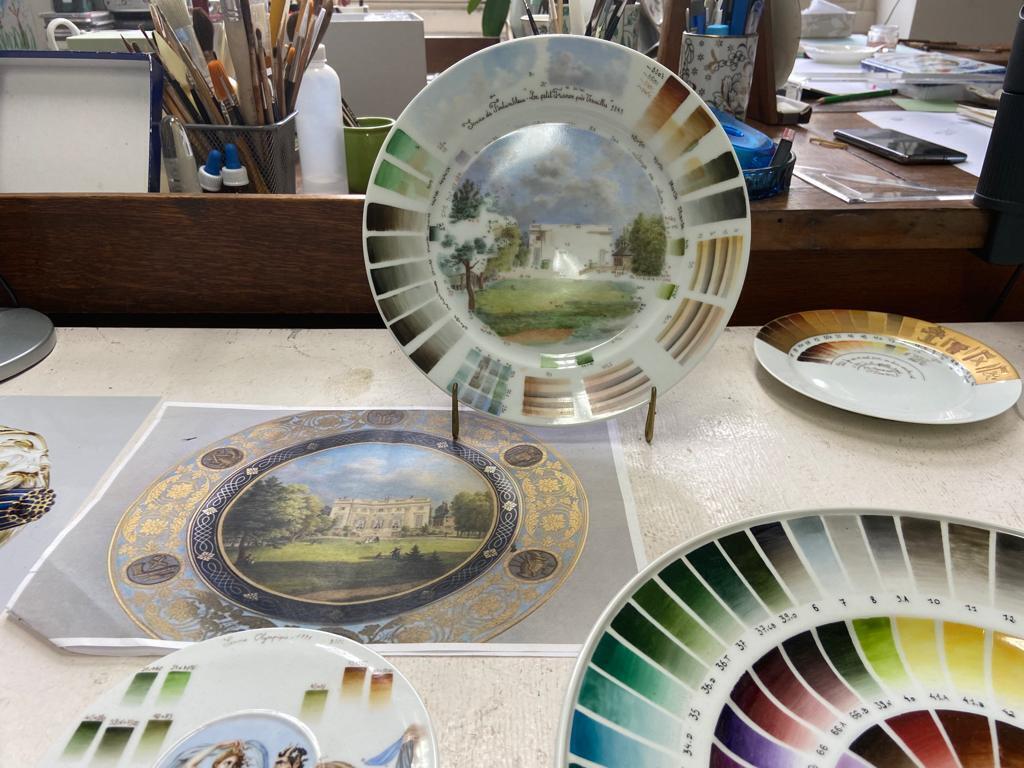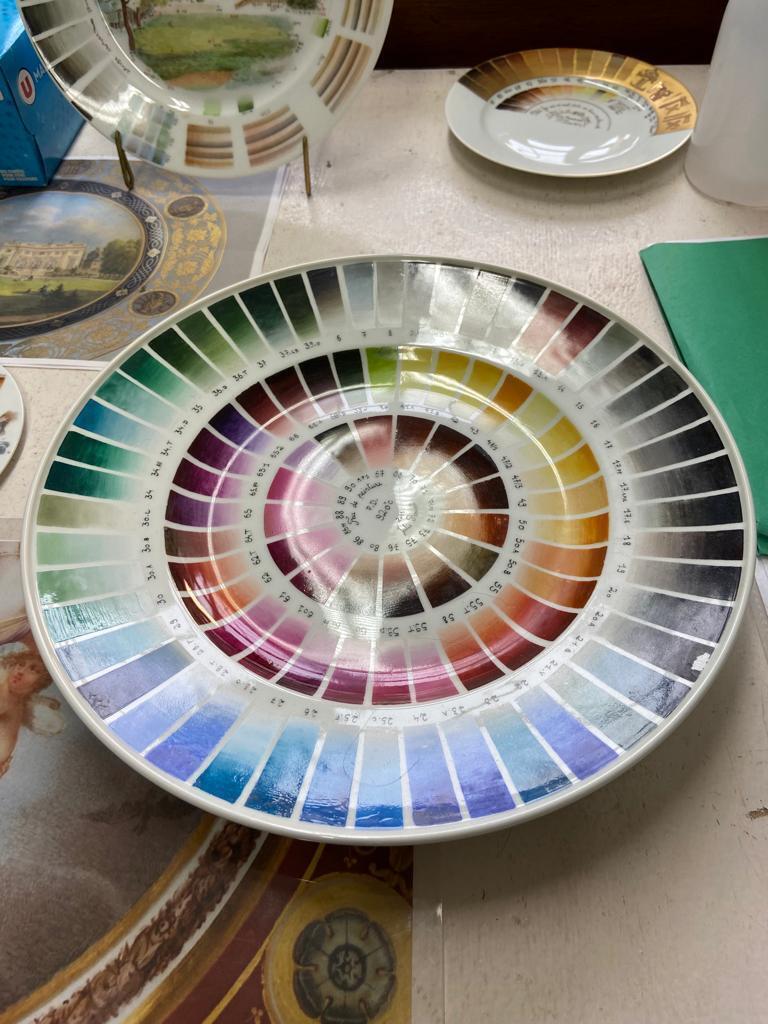Brushes and colors are the essential instruments of the painter. Depending on the requests, the techniques are different and the painter must master a large number of them even if he may have a greater sensitivity for a technique or a century. A meticulous, patient, sensitive and resilient profession towards which a new generation is moving. Today, we have an appointment with Océane Vauclin-Dupuit
Sèvres learns to start from history, basics, gestures to develop his sensitivity to painting and any other practice.
Océane Vauclin-Dupuit, is an apprentice painter: “ Creation, I tend to consider it from a historical point of view. I have often tried to create from historical or literary elements, from books or short stories or poetry. I think that, unconsciously, and there, I am realizing, that the fact of being able to paint in the manner of a century, which we find in Sèvres, that touched me, that combined my appetite for art history and even paintings in literature. There is all this symphony, in a way, of a century, of a movement, of a spirit through the gesture as we learn it at Sèvres. »
Born in the Basque Country, she grew up in Savoy, Brittany and in the east of France in Strasbourg. She did theoretical studies with a baccalaureate S but always wanted to turn to crafts. A good student, she did a literary preparatory class specializing in art history, between Annecy and Strasbourg. Océane Vauclin-Dupuit hesitated between a profession in the restoration of heritage and training at the school of Sèvres. When she discovered the Sèvres museum, she no longer hesitated. She enrolled at the School of Sèvres, obtained her craft certificate. She is now an apprentice painter at the Manufacture of Sevres. For Océane Vauclin-Dupuit, the Manufacture de Sèvres makes the link between the past and the present. This timeless bubble has a very present energy: “ The setting in which we work, the place as such, all the objects and furniture that surrounds us remains a historical witness. For example, the desks we work on are quite specific. They are provided with a bench, a kind of plate which advances to rest the arm, when one paints. »

” These are desks that were created in the 18th century and that we pass on from painter to painter. Ditto for large ovens. Wood oven restored a few years ago to make them work again as they functioned at the time. The whole building and the energy that emanates from it through the various workshops remains a bubble out of time and at the same time constantly in renewal since we bring in contemporary artists. This confrontation of shock and mixture is very rewarding to experience on a daily basis. »
The firing of porcelain adds to the hand of the craftsman, inevitably, a touch of uncertainty, of the unexpected: ” I was able, with the realization of my project, to discover the painting of great fire. It’s something that marked me a lot, which corresponds to me more in the sense that there is a lot of randomness in these paintings, which cook at very high temperatures. We cannot anticipate what will happen. »

” Sometimes, in the oven, there is a part of the unknown and it is precisely this revelation that gives quite incredible effects without us having anticipated or foreseen it. This is also why I turned to ceramics. It is this transition to firing that adds to the hand of the craftsman or the artist something both natural, since it is fireproof, and at the same time, it is something which is added to the gesture of the hand and to the artistic creation. »
Each painter at the Sèvres factory must be able to master everything, but each has his own artistic sensibility. For Océane Vauclin-Dupuit, it’s a sensitivity to color: ” Since I was little, in fact, I have had a sensitivity to color. Everything is sorted by color in my house. During our training, we create a palette. Each painter makes his own palette with all the colors of Sèvres, there are a few hundred and it is at this point that we will apprehend both the texture of all the colors that are made within the Manufacture because they have different textures, and the color change it produces when cooked. »

” Feeling the different materials and the different colors gives us the result after cooking. When we make mixtures, we redo small palettes of research on test plates. We note the quantities of mixture, we weigh our colors, our mixtures and we note everything. Then, everything is cooked before starting the final piece to be able to better anticipate what it will give. »
Find all the episodes of 100% Création on:
Apple Podcast Castbox Deezer Google Podcast Podcast Addict Spotifyor any other platform via the RSS feed.
